 W
WGeorges Abrial was an early French aerodynamicist.
 W
WJohn D. Anderson Jr. is the Curator of Aerodynamics at the National Air and Space Museum at the Smithsonian Institution in Washington, DC and Professor Emeritus in the Department of Aerospace Engineering at the University of Maryland, College Park.
 W
WOtto Hermann Bernhard Behrbohm, born 30 October 1907 in Karlsruhe, Grand Duchy of Baden, Imperial Germany; died 12 October 1977 in Fingelsham, Northbourne, Kent, United Kingdom, was a German mathematician active in Sweden and Germany.
 W
WErik Gustaf Bratt, born January 1, 1916 in Mariefred, died February 13, 2010, was a Swedish civil engineer and pilot. Erik Bratt was the brother of Colonel Lars Bratt.
 W
WLars Harald Brising, born 18 May 1915 in Stockholm, died 4 June 1995 Stockholm, was a Swedish engineer and aircraft designer. He is best known for having been chief designer for Saab 29 Tunnan which flew for the first time in 1948. He became major general of the Royal Swedish Air Force Materiel Administration.
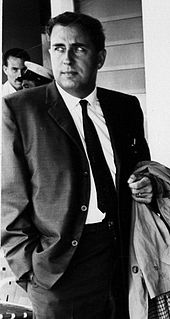 W
WGerald Vincent Bull was a Canadian engineer who developed long-range artillery. He moved from project to project in his quest to economically launch a satellite using a huge artillery piece, to which end he designed the Project Babylon "supergun" for the Iraqi government.
 W
WAdolf Busemann was a German aerospace engineer and influential Nazi-era pioneer in aerodynamics, specialising in supersonic airflows. He introduced the concept of swept wings and, after emigrating in 1947 to the United States under Operation Paperclip, invented the shockwave-free supersonic Busemann biplane.
 W
WElie Carafoli was an accomplished Romanian engineer and aircraft designer. He is considered a pioneering contributor to the field of Aerodynamics.
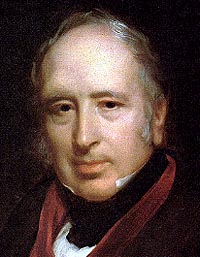 W
WSir George Cayley, 6th Baronet was an English engineer, inventor, and aviator. He is one of the most important people in the history of aeronautics. Many consider him to be the first true scientific aerial investigator and the first person to understand the underlying principles and forces of flight.
 W
WOctave Chanute was a French-American civil engineer and aviation pioneer. He provided many budding enthusiasts, including the Wright brothers, with help and advice, and helped to publicize their flying experiments. At his death he was hailed as the father of aviation and the initial concepts of the heavier-than-air flying machine.
 W
WVirginius Evans Clark was an officer in the United States Army, a military aviation pioneer, and a World War I engineer. Clark designed the 1922 Clark Y airfoil used by many early aircraft.
 W
WHenri Marie Coandă was a Romanian inventor, aerodynamics pioneer, and builder of an experimental aircraft, the Coandă-1910 described by Coandă in the mid-1950s as the world's first jet, a controversial claim disputed by some and supported by others. He invented a great number of devices, designed a "flying saucer" and discovered the Coandă effect of fluid dynamics.
 W
WGeorge "Gogu" Constantinescu was a Romanian scientist, engineer and inventor. During his career, he registered over 130 inventions. He is the creator of the theory of sonics, a new branch of continuum mechanics, in which he described the transmission of mechanical energy through vibrations.
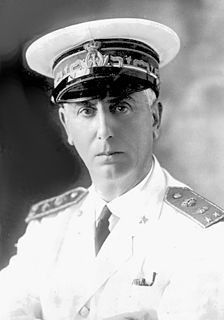 W
WGaetano Arturo Crocco was an Italian scientist and aeronautics pioneer, the founder of the Italian Rocket Society, and went on to become Italy's leading space scientist. He was born in Naples.
 W
WBertil Dillner was a Swedish Aeronautical engineer and aerodynamic expert.
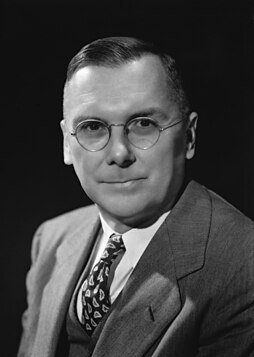 W
WHugh Latimer Dryden was an American aeronautical scientist and civil servant. He served as NASA Deputy Administrator from August 19, 1958, until his death.
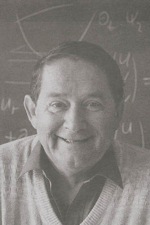 W
WWiktor Eckhaus was a Polish–Dutch mathematician, known for his work on the field of differential equations. He was Professor Emeritus of Applied Mathematics at the Utrecht University.
 W
WAnthony James Fairbrother was an English engineer who was the flight-test engineer on the maiden flight of the de Havilland DH.106 Comet 1, the world's first jet airliner, in 1949.
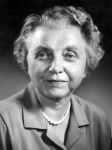 W
WIrmgard Flügge-Lotz, née Lotz was a German-American mathematician, aerospace engineer, and control theorist. She was a pioneer in the development of the theory of discontinuous automatic control, which has found wide application in hysteresis control systems; such applications include guidance systems, electronics, fire-control systems, and temperature regulation. She became the first female engineering professor at Stanford University in 1961 and the first female engineer elected a Fellow of the American Institute of Aeronautics and Astronautics.
 W
WJannette Behrndtz Frandsen is a researcher and consultant who works in many fields including nearshore hydrodynamics, aeroelasticity, numerical analysis, computational fluid dynamics, coastal modeling, experimental fluid mechanics, sloshing, coastal erosion, climate change related problems, e.g., sea level rise, natural hazards, wind energy, biomimetics, wave energy.
 W
WSir Harry Mason Garner was a British aerodynamicist who was also notable as an expert on, and collector of, oriental ceramics.
 W
WProf. Alfred Gessow was an American pioneer in the field of helicopter aerodynamics and aerospace engineering. He was a co-author of the early rotorcraft engineering text, Aerodynamics of the Helicopter, which, although published in 1952, has been in print for more than 50 years. Prof. Gessow was Chair of the Department of Aerospace Engineering at the University of Maryland, College Park, and was ultimately promoted to Professor Emeritus.
 W
WGuo Yonghuai, or Yung-huai Kuo was a Chinese aerospace engineer. He was an expert in aerodynamics.
 W
WWolfgang Siegfried Haack was a German mathematician and aerodynamicist. He in 1941 and William Sears in 1947 independently discovered the Sears–Haack body.
 W
WMiroslav Hajn was a chief designer at ČKD-Praga, one of the largest engineering companies in the former Czechoslovakia and today's Czech Republic.
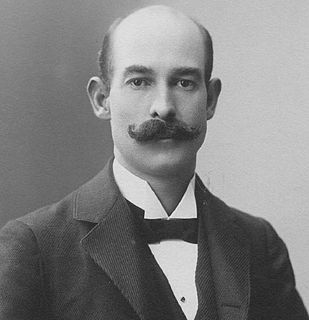 W
WHarry H. Hinde was a Missouri State Representative, businessman, aircraft designer, patent holder, and inventor.
 W
WKumazō Hino was a Japanese inventor and aviation pioneer. His most famous invention is the M1908 pistol.
 W
WEastman Jacobs (1902–1987) was a leading aerodynamicist who worked for NACA's Langley Memorial Aeronautical Laboratory from the 1920s to the 1940s. He was responsible for advancing many fields in aerodynamics, dealing particularly with wind tunnels, airfoils, turbulence, boundary layers, and Schlieren photography.
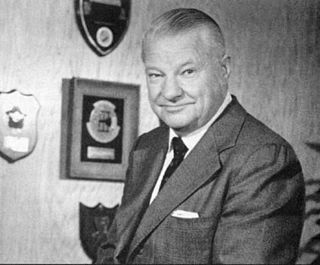 W
WClarence Leonard "Kelly" Johnson was an American aeronautical and systems engineer. He is recognized for his contributions to a series of important aircraft designs, most notably the Lockheed U-2 and SR-71 Blackbird. Besides the first production aircraft to exceed Mach 3, he also produced the first fighter capable of Mach 2, the United States' first operational jet fighter, as well as the first fighter to exceed 400 mph, and many other contributions to various aircraft. As a member and first team leader of the Lockheed Skunk Works, Johnson worked for more than four decades and is said to have been an "organizing genius". He played a leading role in the design of over forty aircraft, including several honored with the prestigious Collier Trophy, acquiring a reputation as one of the most talented and prolific aircraft design engineers in the history of aviation. In 2003, as part of its commemoration of the 100th anniversary of the Wright Brothers' flight, Aviation Week & Space Technology ranked Johnson eighth on its list of the top 100 "most important, most interesting, and most influential people" in the first century of aerospace. Hall Hibbard, Johnson's Lockheed boss, referring to Johnson's Swedish ancestry, once remarked to Ben Rich: "That damned Swede can actually see air."
 W
WRobert T. (Bob) Jones,, was an aerodynamicist and aeronautical engineer for NACA and later NASA. He was known at NASA as "one of the premier aeronautical engineers of the twentieth century".
 W
WTheodore von Kármán was a Hungarian-American mathematician, aerospace engineer, and physicist who was active primarily in the fields of aeronautics and astronautics. He was responsible for many key advances in aerodynamics, notably on supersonic and hypersonic airflow characterization. He is regarded as the outstanding aerodynamic theoretician of the 20th century.
 W
WEarl Schuyler (Sky) Kleinhans was an airplane and flying boat aeronautical engineering pioneer with primary experience at Sikorsky and Douglas Aircraft where he advanced over a 36-year career to become chief engineer and retired as the chairman of the scientific advisory board in 1969 for McDonnell Douglas.
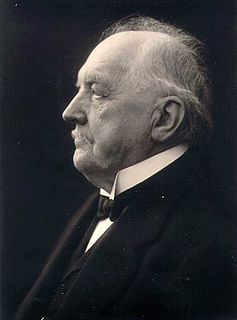 W
WMartin Wilhelm Kutta was a German mathematician.
 W
WFrederick William Lanchester LLD, Hon FRAeS, FRS, was an English polymath and engineer who made important contributions to automotive engineering and to aerodynamics, and co-invented the topic of operations research.
 W
WGeorge William Lewis was the Director of Aeronautical Research at the National Advisory Committee for Aeronautics (NACA) until he retired in 1947. He taught at Swarthmore College from 1910 to 1917.
 W
WAlexander Martin Lippisch was a German aeronautical engineer, a pioneer of aerodynamics who made important contributions to the understanding of tailless aircraft, delta wings and the ground effect, and also worked in the U.S.
 W
WArseny Dmitrievich Mironov was a Russian scientist, aerospace engineer, and aviator. He was one of the oldest researchers in aircraft aerodynamics and flight testing, a Gromov Flight Research Institute (GFRI) director from 1981 to 1985, a recipient of the Stalin Prize in 1948 and the USSR State Prize in 1976, and an honorary citizen of Zhukovsky.
 W
WRichard Edler von Mises was an Austrian Jewish scientist and mathematician who worked on solid mechanics, fluid mechanics, aerodynamics, aeronautics, statistics and probability theory. He held the position of Gordon McKay Professor of Aerodynamics and Applied Mathematics at Harvard University. He described his work in his own words shortly before his death as being on"... practical analysis, integral and differential equations, mechanics, hydrodynamics and aerodynamics, constructive geometry, probability calculus, statistics and philosophy."
 W
WJohn Joseph Montgomery was an American inventor, physicist, engineer, and professor at Santa Clara University in Santa Clara, California who is best known for his invention of controlled heavier-than-air flying machines.
 W
WMax Michael Munk was a German aerospace engineer who worked for the National Advisory Committee for Aeronautics (NACA) in the 1920s and made contributions to the design of airfoils.
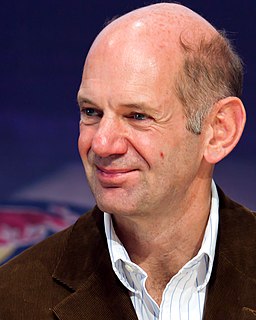 W
WAdrian Newey, is a British Formula One engineer. He is currently the chief technical officer of the Red Bull Racing Formula One team.
 W
WLudwig Prandtl was a German fluid dynamicist, physicist and aerospace scientist. He was a pioneer in the development of rigorous systematic mathematical analyses which he used for underlying the science of aerodynamics, which have come to form the basis of the applied science of aeronautical engineering. In the 1920s he developed the mathematical basis for the fundamental principles of subsonic aerodynamics in particular; and in general up to and including transonic velocities. His studies identified the boundary layer, thin-airfoils, and lifting-line theories. The Prandtl number was named after him.
 W
WQian Xuesen, or Hsue-Shen Tsien, was a Chinese mathematician, cyberneticist, aerospace engineer, and physicist who made significant contributions to the field of aerodynamics and established engineering cybernetics. Recruited from MIT, he joined Theodore von Kármán's group at Caltech. During WWII, he was involved in the Manhattan Project, which ultimately led to the successful development of the first atomic bomb in America. Later on, he would eventually return to China, where he would make important contributions to China's missile and space program.
 W
WDimitri Pavlovitch Riabouchinsky was a Russian fluid dynamicist noted for his discovery of the Riabouchinsky solid technique. With the aid of Nikolay Zhukovsky he founded the Institute of Aerodynamics in 1904, the first in Europe. He also independently discovered equivalent results to the Buckingham Pi Theorem in 1911. Riabouchinsky left Russia following the October Revolution and his short-term arrest, spending the rest of his life in Paris, yet he never accepted the French citizenship and used his Nansen passport up till death. He was a member of the Moscow State University, the University of Paris, the French Academy of Sciences as well as one of the co-founders of the Russian Higher Technical School in France. Over 200 scientific works were published during his lifetime. He was an Invited Speaker of the ICM in 1920 at Strasbourg, in 1928 at Bologna, and in 1932 at Zurich.
 W
WGertrude S. Rogallo was one of the co-inventors of the flexible wing. These wings are now known as Rogallo wings. She and her husband, Francis Rogallo, invented the wing and obtained two United States patents on different versions of it in the early 1950s. Rogallo wings are commonly used today in kites, hang gliders and powered hang gliders.
 W
WStanisław Rogalski was a Polish aircraft designer, born in Olomouc, best known as one of the founding trio of the inter-war period RWD airplane factory in Warsaw. He obtained his degree at Warsaw University of Technology. After World War II he moved to the United States, where he ended his career at Grumman as an aerodynamics expert.
 W
WEdvard Rusjan was a Italo-Slovenian flight pioneer and airplane constructor. He died in an airplane crash in Belgrade.
 W
WSivaguru S. Sritharan is an American aerodynamicist and mathematician.
 W
WSir Geoffrey Ingram Taylor OM FRS HFRSE was a British physicist and mathematician, and a major figure in fluid dynamics and wave theory. His biographer and one-time student, George Batchelor, described him as "one of the most notable scientists of this century".
 W
WTheodore Theodorsen was a Norwegian-American theoretical aerodynamicist noted for his work at NACA and for his contributions to the study of turbulence.
 W
WVictor Vâlcovici was a Romanian mechanician and mathematician.
 W
WMilton Denman Van Dyke was Professor of the Department of Aeronautics and Astronautics at Stanford University. He was known for his work in fluid dynamics, especially with respect to the use of perturbation analysis in aerodynamics. His often-cited book An Album of Fluid Motion presents a collection of about 400 selected black-and-white photographs of flow visualization in experiments, received – on his request – from researchers all over the world.
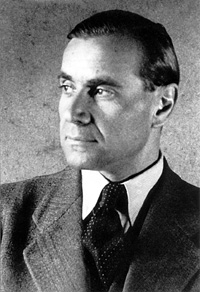 W
WHerbert Alois Wagner was an Austrian scientist who developed numerous innovations in the fields of aerodynamics, aircraft structures and guided weapons. He is most famous for Wagner's function describing unsteady lift on wings and developing the Henschel Hs 293 glide bomb.
 W
WFrid Benjamin Filippus Wänström was a Swedish aviation engineer who after KTH Royal Institute of Technology in 1932 was employed by the flygstyrelsen, from 1936 head of the calculation department Saab AB in Linköping.
 W
WJohanna Weber was a German-born British mathematician and aerodynamicist. She is best known for her contributions to the development of the Handley Page Victor bomber and the Concorde.
 W
WRichard Travis Whitcomb was an American aeronautical engineer who was noted for his contributions to the science of aerodynamics.
 W
WThe Wright brothers—Orville and Wilbur —were two American aviation pioneers generally credited with inventing, building, and flying the world's first successful motor-operated airplane. They made the first controlled, sustained flight of a powered, heavier-than-air aircraft with the Wright Flyer on December 17, 1903, 4 mi (6 km) south of Kitty Hawk, North Carolina. In 1904–05, the brothers developed their flying machine to make longer-running and more aerodynamic flights with the Wright Flyer II, followed by the first truly practical fixed-wing aircraft, the Wright Flyer III. The Wright brothers were also the first to invent aircraft controls that made fixed-wing powered flight possible.
 W
WRyōichi Yazu was a Japanese inventor. He is best known for his invention of Japan's first mechanical calculator.
 W
WNikolay Yegorovich Zhukovsky was a Russian scientist, mathematician and engineer, and a founding father of modern aero- and hydrodynamics. Whereas contemporary scientists scoffed at the idea of human flight, Zhukovsky was the first to undertake the study of airflow. He is often called the Father of Russian Aviation.